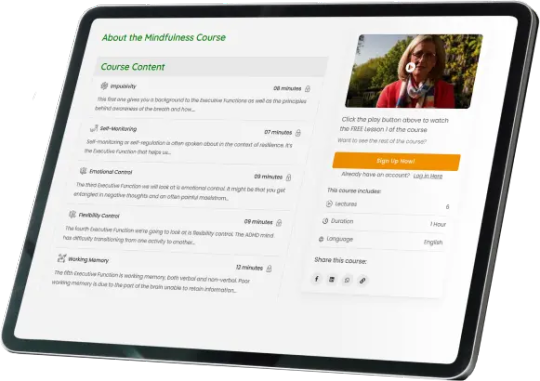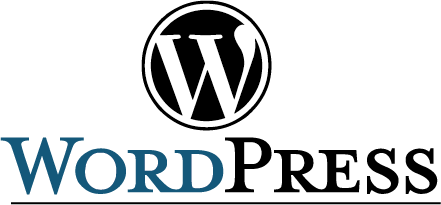#LearnDash customization
Explore tagged Tumblr posts
Text
Best Payment Gateways for LearnDash in 2024

In 2024, LearnDash users have a range of payment gateway options to optimize their course delivery. In this blog, we'll explore the 8 top gateways tailored for LearnDash, ensuring a seamless transactional experience alongside quality content. From established players offering robust security to innovative solutions from newcomers, each gateway offers distinct advantages. Whether you prioritize global accessibility, ease of use, or affordability, this guide will assist you in finding the ideal fit for your Custom LearnDash Development platform.
PayPal Pro
Stripe
ApplePay
Authorize.net
Verifone
Mollie Payments for WooCommerce
WooCommerce payments
Square
In 2024, LearnDash users have a wide array of payment gateways to choose from, catering to diverse needs and preferences. Each gateway boasts unique features such as seamless integration, user-friendly interfaces, global transaction support, and advanced security measures. As the e-learning industry expands, selecting the right payment gateway becomes pivotal in ensuring a smooth and secure checkout experience for students. By carefully evaluating your LearnDash site's requirements and target audience, you can pick a payment gateway that not only enhances platform functionality but also contributes to the overall success of your online courses.
Source URL: https://www.saffiretech.com/blog/best-payment-gateways-for-learndash
0 notes
Text
#black friday#deals#learndash#customers#flexible#flexibility#business#marketing#site web#digitalmarketing
0 notes
Text
#learndash custom development#learndash development#learndash consulting#custom woocommerce development#woocommerce plugin developer
1 note
·
View note
Text
What Are the Best WordPress Themes? A Complete Guide for 2025

Choosing the best WordPress theme is one of the most important decisions you'll make when building your website. A good theme not only gives your site a stunning look but also impacts performance, SEO, and user experience.
Whether you're creating a blog, business website, portfolio, or online store, the right theme can set you up for success. In this blog, we'll explore the top WordPress themes in 2025, categorized by use case, and explain why they stand out.
Why Choosing the Right Theme Matters
Before jumping into the list, let’s understand why your theme choice is critical:
Speed & Performance: A lightweight theme helps your site load faster, improving SEO and user satisfaction.
Mobile Responsiveness: With over 60% of traffic coming from mobile, a responsive theme is non-negotiable.
Customization: The right theme offers flexibility without needing to code.
Security: Well-coded themes reduce vulnerabilities.
SEO-Ready: Clean HTML structure and schema markup make it easier for search engines to index your site.
1. Astra – Lightweight & Super Fast
Best For: Blogs, portfolios, businesses, eCommerce
Why it’s great:
Loads in under 0.5 seconds
Deep integration with page builders like Elementor & Beaver Builder
Extensive library of pre-built starter templates
Fully WooCommerce-compatible
Pros:
Beginner-friendly
SEO-optimized
Regular updates and strong community
Price: Free version available. Premium starts at $49/year
2. GeneratePress – Performance-Focused Theme
Best For: Speed-focused websites, developers, minimalists
Why it’s great:
One of the lightest themes on the market (less than 10KB)
Modular structure lets you disable unnecessary features
Works perfectly with Gutenberg and major page builders
Pros:
Accessibility-ready
Clean code
Highly customizable
Price: Free version available. Premium starts at $59/year
3. Divi by Elegant Themes – All-in-One Builder
Best For: Creative professionals, agencies, marketing sites
Why it’s great:
Comes with its own powerful drag-and-drop builder
200+ website packs for quick setup
A/B testing and marketing tools built-in
Pros:
Unlimited use on multiple sites
Great for design-heavy websites
Lifetime license available
Price: Starts at $89/year or $249 one-time
4. OceanWP – Feature-Rich & WooCommerce-Ready
Best For: eCommerce stores, membership sites
Why it’s great:
Built-in WooCommerce features like floating cart and product quick view
Ready-made demo sites
Works well with page builders
Pros:
Fast-loading
Developer-friendly
Supports RTL and translation plugins
Price: Free version available. Premium starts at $43/year
5. Kadence – Modern & Intuitive
Best For: Businesses, bloggers, course creators
Why it’s great:
Modern design out of the box
Excellent header and footer builder
Integrates with LearnDash and LifterLMS
Pros:
Accessibility ready
Global design settings
Lightweight and fast
Price: Free version available. Premium starts at $59/year
6. Neve by ThemeIsle – Fast & Flexible
Best For: Freelancers, startups, landing pages
Why it’s great:
Mobile-first design
AMP-compatible
Dozens of starter sites with one-click import
Pros:
Integrates with Elementor, Brizy, Gutenberg
SEO-friendly
Clean minimalist layouts
Price: Free version available. Premium starts at $69/year
7. Hello by Elementor – For Page Builder Lovers
Best For: Advanced users building with Elementor
Why it’s great:
Minimal and clean base theme
Designed specifically to work with Elementor Pro
Blazing fast
Pros:
No bloat
Great for custom designs
Lightweight foundation
Price: Free
8. Sydney – Professional Business Theme
Best For: Service-based businesses, agencies
Why it’s great:
Full-screen slider and smooth parallax
Elementor compatibility
Powerful theme customizer
Pros:
Built-in social icons
Regular updates
Translation-ready
Price: Free version available. Pro starts at $69/year
9. Hestia – One Page & Modern
Best For: Small businesses, landing pages, startups
Why it’s great:
Sleek one-page design
WooCommerce-ready
SEO and speed optimized
Pros:
Live customizer
Compatible with all major page builders
Retina-ready design
Price: Free version available. Pro starts at $69/year
10. Soledad – Best for Magazines & Blogs
Best For: Bloggers, news websites, magazines
Why it’s great:
6,000+ demo homepage options
Optimized for speed and SEO
Integrated with WPBakery and Elementor
Pros:
Rich typography settings
AMP support
Flexible layout controls
Price: Starts at $59 (one-time fee on ThemeForest)
How to Choose the Right WordPress Theme
Here are a few tips when selecting the best theme for your needs:
Define Your Purpose
What kind of website are you building? A blog, portfolio, eCommerce store? Choose a theme that aligns with your goal.
Check Reviews & Ratings
Look at real user reviews on the WordPress theme directory or ThemeForest. Themes with frequent updates and strong support tend to be more reliable.
Mobile Responsiveness
Ensure the theme is mobile-friendly. Test its demo on different devices to confirm.
Speed Test
Use tools like GTmetrix or PageSpeed Insights to check theme loading speed before installing.
Look for SEO Features
Themes with schema markup, clean HTML, and fast loading times improve your chances of ranking higher on Google.
Final Thoughts
Your WordPress theme is more than just the “look” of your site—it directly affects your visitors’ experience, SEO rankings, and conversion rates. Whether you’re looking for speed, design flexibility, or WooCommerce features, there’s a perfect theme out there for you.
Astra, GeneratePress, and Kadence are solid options for most users. For design control, Divi and Elementor + Hello are top choices. And if you're blogging or running a magazine site, Soledad is tough to beat.
Choose wisely, test thoroughly, and keep performance in mind. With the right theme, your WordPress site will be on a path to success.
0 notes
Text
Cloud Web Server Hosting in 2025 The Ultimate Cloud Web Server Guide by SEOHostKing

What Is Cloud Web Server Hosting in 2025? Cloud web server hosting in 2025 is the most advanced, scalable, and reliable way to host websites and web applications. It utilizes a network of virtualized servers operating in the cloud to provide lightning-fast performance, elastic resource allocation, and nearly 100% uptime. Unlike traditional hosting, it doesn’t rely on a single physical machine, which means your website stays online even if one server fails. Why Cloud Web Hosting Is the #1 Choice in 2025 High Availability Architecture Your website is hosted across multiple cloud servers. If one goes down, another instantly takes over. This fault-tolerant infrastructure ensures your web presence is always available. Automatic Resource Scaling In 2025, websites can experience unpredictable traffic surges. Cloud web hosting automatically scales your resources—CPU, RAM, and bandwidth—so you’re always ready for growth without downtime. Blazing-Fast Load Times With SSD/NVMe drives, global CDN integration, and advanced caching layers, cloud web hosting provides sub-second page load times—critical for SEO and user experience. Top Benefits of Cloud Web Hosting with SEOHostKing Unlimited Scalability Add or remove resources instantly without migration or reconfiguration. Perfect for startups, agencies, and enterprises alike. 99.99% Uptime Guarantee Cloud-based redundancy and self-healing systems eliminate single points of failure, ensuring your website is always online. Real-Time Server Monitoring Proactive monitoring tools detect issues before they happen. SEOHostKing’s AI-based alerts provide early warnings and automated fixes. Daily Offsite Backups With daily backups and fast restoration, you can restore your entire site or individual files anytime with one click. 24/7 Technical Support Cloud experts are available around the clock to help you with server setup, optimization, and issue resolution. Full Root Access Whether you need to install custom software, run scripts, or configure your own environment, full root access puts you in control. Use Cases of Cloud Web Server Hosting in 2025 High-Traffic Blogs and News Portals Websites publishing regular content need scalable hosting to handle massive visitor spikes without compromising performance.

eCommerce Stores From WooCommerce to Magento, cloud hosting ensures fast product loading, secure checkouts, and minimal downtime—key to higher conversions. Corporate Business Sites Businesses benefit from reliable uptime, branding security, and responsive support with cloud infrastructure powering their websites. Digital Agencies Manage client websites with ease. Create isolated environments, scale per client, and automate updates. Educational Platforms and LMS Deploy Moodle, LearnDash, or custom learning systems on cloud servers with global reach and low latency for students. How to Launch a Cloud Web Server with SEOHostKing Step 1: Select a Hosting Plan Choose a plan based on traffic expectations, required resources, and scalability needs. Options range from entry-level to enterprise-ready. Step 2: Choose a Control Panel Decide between cPanel, Plesk, or a custom dashboard for managing your files, domains, databases, and emails. Step 3: Deploy Your Cloud Server Launch your server from SEOHostKing’s dashboard with pre-configured templates or your own OS of choice. Step 4: Point Your Domain Configure your domain’s DNS to connect it to your cloud server and go live instantly. Step 5: Optimize for Performance Install caching plugins, enable CDN integration, configure compression, and set up SSL for maximum speed and security. Cloud Hosting vs Traditional Hosting Cloud Hosting vs Shared Hosting Cloud hosting provides isolated environments with guaranteed resources, while shared hosting puts your site at risk of neighboring sites’ issues. Cloud Hosting vs VPS Hosting While VPS is a step up from shared hosting, cloud web hosting offers even more flexibility, redundancy, and scalability. Cloud Hosting vs Dedicated Servers Cloud hosting removes hardware limitations, offering better uptime, scalability, and cost-efficiency over physical servers. Why Cloud Hosting Is SEO-Friendly in 2025 Faster Page Speeds Google rewards fast websites. Cloud web hosting with SSD storage and CDN boosts performance dramatically. Higher Uptime = Better Rankings Sites that are constantly down lose traffic and rankings. Cloud hosting’s high-availability design keeps your site online. Global Data Centers for Geo-Targeting Choose server locations closest to your audience to reduce latency and improve regional rankings. Built-in SSL and HTTP/3 Support Secure websites with fast modern protocols increase trust and SEO signals. Best Features of SEOHostKing’s Cloud Web Hosting One-Click App Installer Deploy WordPress, Laravel, Joomla, Drupal, and hundreds of other platforms instantly. DDoS Protection and WAF Built-in security layers protect your site against hackers, bots, and malware. Staging Environments Test changes in a staging area before pushing live, avoiding disruptions to your live site. Email Hosting Integration Easily add professional email accounts with anti-spam protection and SMTP/IMAP/POP3 support. Developer-Friendly Tools SSH, GIT, Composer, Python, Node.js, and custom stacks available with full root access for advanced users. How to Optimize Cloud Web Hosting for Speed Use a Content Delivery Network (CDN) Serve static content from global edge nodes to minimize server load and increase delivery speed. Enable GZIP Compression and Browser Caching Speed up page rendering by compressing files and storing assets in users’ browsers. Optimize Images and Lazy Load Reduce page size and load times with image compression and lazy loading for media-rich sites. Leverage PHP 8.x and HTTP/3 Modern web tech ensures faster processing, better compatibility, and more stable performance. Best Control Panels for Cloud Web Hosting cPanel User-friendly, powerful, and loaded with tools like Softaculous, email management, and security modules. Plesk Ideal for Windows or multi-platform users with advanced development tools and Docker support. CyberPanel A lightweight, open-source panel based on LiteSpeed, offering powerful caching and WordPress support. SEOHostKing’s Cloud Hosting Plans in 2025 Startup Cloud Plan Perfect for small businesses or blogs with up to 10,000 monthly visits. Comes with 1 CPU core, 1 GB RAM, and 20 GB SSD. Professional Cloud Plan For medium-sized businesses, marketing agencies, and growing sites. Includes 2 CPU cores, 4 GB RAM, and 60 GB SSD. Enterprise Cloud Plan Built for high-traffic eCommerce, SaaS, and media-heavy platforms. Offers 4+ CPU cores, 8+ GB RAM, and 120+ GB SSD. Fully Managed Cloud Hosting Option Worry-Free Maintenance Let SEOHostKing handle OS updates, patching, malware removal, and server configuration while you focus on business. Guaranteed Optimization Your website is optimized by cloud engineers to ensure max speed, security, and performance. 24/7 Monitoring and Repair Downtime and errors are detected and fixed automatically before they affect your site. Top Security Measures for Cloud Web Hosting Firewall and Intrusion Detection Automated firewalls and monitoring systems detect and block unauthorized access. Two-Factor Authentication Protect your control panel and server with 2FA to prevent unauthorized logins. Malware and Vulnerability Scanning Daily scans detect threats, outdated software, and suspicious activity. SSL Certificates and HSTS All plans come with SSL and can be configured with HSTS for better encryption and browser trust. Cloud Hosting Trends in 2025 AI-Powered Server Optimization Intelligent algorithms automatically adjust server performance based on user behavior and traffic patterns. Green Hosting and Sustainability Data centers now run on renewable energy, and SEOHostKing ensures carbon-neutral hosting solutions. Edge Computing Expansion Data is processed closer to users at edge nodes for even faster response times and minimal delay. Zero-Downtime Deployments Sites can be updated or migrated live without affecting user access or search rankings. Cloud web server hosting in 2025 has redefined how websites are launched, managed, and scaled. With powerful servers, instant resource flexibility, airtight security, and developer-ready tools, it’s the perfect solution for modern businesses. SEOHostKing delivers industry-leading cloud web hosting that’s built for SEO, optimized for performance, and ready for your digital future. Read the full article
0 notes
Text
What Makes a Good Membership Plugin in 2025? Key Features to Look For
In 2025, the digital membership economy continues to thrive, and choosing the right membership plugin can make or break the success of your online business. Whether you're launching an exclusive content platform, an eLearning website, or a subscription-based community, having a reliable and feature-rich membership plugin is crucial. Below, we explore the essential features, capabilities, and integrations that define the best membership plugins in 2025.
🚀 Future-Proof Integration Capabilities
A top-tier membership plugin in 2025 must offer seamless integrations with all major platforms and tools. From payment gateways like Stripe, PayPal, and Razorpay, to email marketing tools like Mailchimp, Klaviyo, and ActiveCampaign, integration is non-negotiable.
Key integrations to look for:
CRM tools: HubSpot, Zoho, Salesforce
LMS platforms: LearnDash, LifterLMS, Tutor LMS
eCommerce platforms: WooCommerce, Shopify, BigCommerce
Communication platforms: Slack, Discord, Zoom
If your plugin doesn’t support Zapier or Make (Integromat), it’s already behind the curve.
💳 Multiple Payment Options & Flexible Billing
Subscription flexibility is a core expectation in 2025. The ideal membership plugin must allow for:
Recurring payments (monthly, annually, quarterly)
One-time fees
Free trials and paid trials
Prorated billing
Upgrade/Downgrade plans without canceling
Support for global currencies, tax compliance (like EU VAT, GST), and invoice generation is critical. Plugins should also support Buy Now, Pay Later (BNPL) options such as Klarna or Afterpay to attract younger audiences.
🛡️ Enterprise-Grade Security & Content Protection
Members expect their data to be safe. Therefore, GDPR, CCPA, and PCI-DSS compliance are essential. Additionally, the plugin must offer:
Role-based access control
Encrypted login and two-factor authentication
IP restriction and geo-blocking
Anti-sharing protection (to prevent account misuse)
High-quality plugins use token-based authentication and email verification before granting access.
🧩 Advanced Content Dripping and Gating Mechanisms
Gone are the days of static content delivery. A modern membership plugin should offer:
Time-based content dripping (e.g., release Module 1 after 7 days)
Action-based unlocking (e.g., unlock next lesson after quiz completion)
Progressive onboarding sequences
Conditional content access based on member tags, behavior, or subscription tier
This leads to higher engagement, reduced churn, and better user satisfaction.
📊 Built-In Analytics & Reporting Dashboards
You can’t improve what you don’t measure. The best membership plugins in 2025 come equipped with real-time dashboards and advanced analytics.
Metrics you should track:
User retention rate
Churn rate
Revenue per member
Average subscription duration
Popular content/modules
Payment failure trends
Look for plugins that offer Google Analytics 4, Facebook Pixel, and custom event tracking compatibility out of the box.
📱 Mobile-First Member Experience
With mobile traffic exceeding 60% globally, your membership plugin must offer a responsive user experience. Bonus points if it supports:
Progressive Web Apps (PWA)
Customizable member dashboards
Mobile push notifications
In-app purchases for iOS and Android
Plugins that fail to deliver mobile accessibility are instantly disqualified from serious consideration.
🧠 AI-Powered Personalization and Automation
2025 plugins must be smart. AI-enhanced capabilities now power:
Dynamic content recommendations
Personalized upselling offers
Predictive churn prevention
Automated email journeys
The best membership plugins integrate with AI assistants and chatbots, helping automate FAQs, billing queries, and even community moderation.
📥 Easy Migration & Import Tools
Switching from one membership plugin to another shouldn’t be a nightmare. Look for:
CSV import/export
Auto-mapping for membership levels
Retention of subscription history
Migration guides or built-in migration wizards
Seamless onboarding is vital, especially for sites with thousands of active members.
👥 Tiered Membership & Group Subscriptions
A modern membership plugin must support:
Multiple pricing tiers with unique access levels
Team or group memberships (perfect for corporate clients)
Volume discounts
Add-on purchases
Support for parent-child account structures (e.g., one admin with multiple users under them) gives you a competitive edge.
🎨 Full Customization Without Code
Your brand matters. Top-tier plugins must offer:
White labeling options
Custom CSS/JS injection
Drag-and-drop member area builder
Custom email templates
The plugin should not lock you into rigid templates or force branding that isn’t yours.
🌐 Multilingual and Multisite Support
Global audiences demand multilingual support, and the best membership plugins now offer compatibility with:
WPML, Polylang, or TranslatePress
Multisite WordPress installations
RTL language support
Also, ensure it handles timezone localization and region-specific pricing with precision.
📞 World-Class Support and Documentation
Support is not an afterthought. Choose a plugin with:
24/7 live chat
Extensive documentation
Tutorial videos
Dedicated onboarding support
Developer-friendly API documentation
A strong plugin is only as good as the support behind it.
Final Thoughts
Choosing the right membership plugin in 2025 means investing in flexibility, security, AI-driven engagement, and global readiness. Whether you're running a coaching business, an eLearning academy, or an exclusive content platform, your membership plugin should empower growth without friction.
Focus on plugins that evolve fast, offer constant updates, and support the way you want to scale.
0 notes
Text
Top 12 WordPress Membership Plugins (2025 Edition)
Introduction
Why You Need a Membership Plugin in 2025
In 2025, building a strong online business means giving your visitors a reason to come back. Whether you run an eLearning site, a fitness program, a digital course, or a private community, a membership plugin helps you manage users, protect content, and earn steady income.
Instead of selling one-time products, you can build monthly or yearly subscriptions, offer exclusive access to premium content, and give members a personalized experience. It helps build trust, loyalty, and a stronger brand.
With more people working and learning online, membership websites are booming. But to grow safely and smartly, you need the right tools. That’s where membership plugins come in.
What to Look for in a Membership Plugin
Not all plugins are the same. A good WordPress membership plugin should offer:
Content protection – Let you lock pages, posts, videos, and downloads.
Flexible plans – Offer free, paid, trial, or tiered memberships.
Payment integration – Accept payments with Stripe, PayPal, or WooCommerce.
User management – Track members, renewals, upgrades, and more.
Easy setup – Should work with your current WordPress theme and plugins.
Scalability – Can it grow with you when you have 1,000 or 100,000 members?
Now let’s explore the best 12 WordPress membership plugins for 2025.
Top 12 WordPress Membership Plugins (2025 Edition)
1. MemberPress – Best All-in-One Solution
MemberPress is one of the most popular and trusted WordPress membership plugins. It offers everything in one place—membership management, paywall setup, content dripping, course building, and more.
It integrates well with Stripe, PayPal, and email tools like Mailchimp or ConvertKit. You can easily create multiple membership levels, restrict content, and track member activity.
It also works great with LearnDash or BuddyBoss, making it perfect for online schools or communities.
✅ Great for: Coaches, educators, digital creators, and online communities.
2. Restrict Content Pro – Lightweight & Developer-Friendly
Restrict Content Pro is a clean and fast membership plugin built for developers and performance-focused websites. It's simple to use but powerful under the hood.
It supports unlimited membership levels, payment integrations, discount codes, and reporting. It’s ideal if you want full control over how your membership works.
✅ Great for: Developers, minimal websites, and custom setups.
3. LearnDash + MemberDash – Best for eLearning
LearnDash is a leading LMS plugin, and MemberDash is its new premium membership addon. Together, they give you full control over courses, lessons, quizzes, and member access.
You can drip content, sell bundles, create certificates, and track student progress. It supports gamification, group learning, and deep reporting.
✅ Great for: Online course creators, schools, and training academies.
4. WooCommerce Memberships – Ideal for Online Stores
If you run a WooCommerce store, WooCommerce Memberships is a natural fit. It connects your store and membership features in one dashboard.
You can give members special discounts, hide products from non-members, or offer free downloads. You can also link memberships to products—buy one, get access to something exclusive.
✅ Great for: Online shops, digital product sellers, and subscription boxes.
5. BuddyBoss + MemberPress – Best for Communities
Want to build a full online community with forums, activity feeds, groups, and courses? Use BuddyBoss with MemberPress.
BuddyBoss gives you the front-end design and community features, while MemberPress handles the memberships and payments.
Together, they help you create platforms like Patreon, MasterClass, or Facebook Groups—but better, because you own it.
✅ Great for: Coaches, communities, and social learning platforms.
6. Paid Memberships Pro – Great Free Option
Paid Memberships Pro offers a solid free version with lots of features. It includes multiple membership levels, content restriction, payments, and more.
You can upgrade to premium for advanced features like WooCommerce support, recurring donations, and Stripe/PayPal integration.
It also has a large number of add-ons, making it very flexible.
✅ Great for: Nonprofits, startups, and anyone on a budget.
7. Ultimate Member – Best for User Profiles
Ultimate Member focuses on member profiles and user directories. It’s ideal for building a community with rich profile pages, custom fields, and front-end registration.
It supports content restriction and user roles, and works well with plugins like WooCommerce and LearnDash.
✅ Great for: Social sites, user directories, and networking platforms.
8. Wishlist Member – Longstanding Favorite
Wishlist Member has been around for years and is trusted by thousands. It offers drip content, multiple membership levels, and strong content control.
It supports over 50 integrations including email marketing tools, CRMs, and payment gateways. It’s known for being stable and reliable.
✅ Great for: Coaches, bloggers, and course sellers.
9. s2Member – Powerful Free Core
s2Member is another powerful plugin with a free version. The setup is a bit more technical, but it offers strong security, PayPal integration, custom capabilities, and content dripping.
The pro version supports Stripe and many more advanced features.
✅ Great for: Advanced users and developers who want a no-frills solution.
10. ARMember – Budget-Friendly & Feature-Rich
ARMember is a great option for those who want a modern design and full features at a lower price.
It includes content restriction, drip content, email marketing, coupons, and form builders. You can also sell one-time or recurring memberships.
Its user interface is beginner-friendly, and it includes pre-made templates.
✅ Great for: Budget-conscious creators and simple paid communities.
11. MemberMouse – Business-Ready & Analytics Focused
MemberMouse is a powerful membership platform built for businesses. It includes tools for sales tracking, customer management, and detailed analytics.
It’s not a traditional plugin—you pay based on your number of users—but it’s ideal for serious sites looking to grow big.
✅ Great for: Entrepreneurs, SaaS sites, and high-volume platforms.
12. aMember Pro – Global, Multilingual Support
aMember Pro is one of the few membership plugins that’s truly built for international use. It supports multi-language content, many currencies, and flexible payment gateways.
It’s not a native WordPress plugin but integrates well. It offers advanced features like affiliate tracking, email marketing, and flexible forms.
✅ Great for: Global businesses and multi-language course sites.
How to Choose the Right Membership Plugin
Key Factors to Consider
Picking the right WordPress membership plugin can feel hard, but here are some easy tips:
Ease of Use: Look for a plugin with a clean, simple setup.
Payment Options: Make sure it works with PayPal, Stripe, or WooCommerce.
Membership Levels: Can you create free, paid, trial, or VIP levels?
Email Integration: Helps you send welcome emails and updates automatically.
Content Locking: Can you protect pages, videos, or downloads?
Choose a plugin that fits your goals—not just the one with the most features.
Plugin Compatibility & Scalability
Think about the future. Will your site grow? Will you add online courses or a community later?
A good plugin should:
Work with your theme and other plugins
Support thousands of users without breaking
Allow upgrades without starting over
Plugins like MemberPress, Paid Memberships Pro, and Restrict Content Pro are very scalable and trusted by big websites.
Community vs. Course-Based Sites
What kind of site are you building?
If you’re building an eLearning platform, choose LearnDash + MemberDash or MemberPress.
If your focus is a community, go with BuddyBoss + MemberPress or Ultimate Member.
For eCommerce stores, WooCommerce Memberships is the best fit.
Every plugin has strengths. Pick based on your main goal: teaching, selling, or building a tribe.
Bonus Tips: Combining Membership with LMS and Community Tools
Using BuddyBoss, LearnDash, and Gamification
Want the best of everything? You can combine plugins for a full experience.
Use:
LearnDash to build courses with lessons, quizzes, and certificates.
BuddyBoss to create a Facebook-style community.
GamiPress to add points, badges, and rewards.
Together, they help increase engagement, boost course completion, and build loyalty.
Drip Content, Quizzes, and Forums
Drip content means giving members content one piece at a time—not all at once. This keeps them coming back.
Add:
Quizzes to test learning
Private forums for discussion
Certificates to show progress
These tools make your website feel more like a real classroom or club.
Final Thoughts on WordPress Membership Plugins for 2025
Summary of Best Use Cases
Let’s recap the best plugins for different needs:
Best all-in-one: MemberPress
Best for online courses: LearnDash + MemberDash
Best for communities: BuddyBoss + MemberPress
Best for stores: WooCommerce Memberships
Best free option: Paid Memberships Pro
Best for user profiles: Ultimate Member
No matter your goal—learning, selling, or connecting—there’s a plugin just for you.
Future Trends in Membership Sites
In 2025, smart creators are focusing on:
Gamification – Adding fun to keep users coming back
Micro-communities – Small, focused groups that feel personal
AI-driven learning – Courses that adapt to users’ needs
Mobile-first designs – Members access your site on phones more than ever
Choosing tools that grow with you is the key to success.
Get Help: Build Your Membership Site with Creation Wave
Don’t want to build it alone? Let us help!
At Creation Wave, we build:
Custom WordPress membership websites
LearnDash eLearning platforms
Community platforms with BuddyBoss
Automation tools and secure payment systems
We handle the tech, so you can focus on your members.
FAQs (Search-Optimized)
What’s the best free WordPress membership plugin in 2025?
Paid Memberships Pro offers the most powerful free version. It supports multiple levels, payments, and content restriction.
Can I use multiple membership levels on WordPress?
Yes! Most plugins like MemberPress, s2Member, and Restrict Content Pro let you create free, paid, or tiered memberships.
What plugin works best with LearnDash or BuddyBoss?
Use MemberPress or Paid Memberships Pro. They work well with LearnDash for courses and BuddyBoss for communities.
How do I secure content behind a paywall in WordPress?
Use a plugin like MemberPress or Restrict Content Pro. You can hide pages, posts, and downloads so only paying members can access them.
0 notes
Text
The Evolution of a WordPress-Based Membership Site
Building a successful membership site requires more than just good content—it needs a strong technical foundation that can scale with user demand and provide a seamless experience. WordPress has become a go-to platform for these kinds of websites, thanks to its flexibility and the vast ecosystem of plugins and themes. Over time, we've seen how a simple membership site can evolve into a complex, feature-rich platform with the right strategy and support from experienced professionals.
Here’s a breakdown of how a WordPress-based membership site evolves over time and the role WordPress development companies play in this transformation.
1. Phase One: The Launch
Most membership sites start with the basics—a content gate, a registration form, and payment integration. At this stage, it’s crucial to keep things simple and focus on getting early members through the door. Many site owners work with WordPress development agencies during this phase to choose the right plugins (like MemberPress or Restrict Content Pro) and to ensure the site is stable and secure.
2. Phase Two: Optimization and Customization
As membership grows, so do the expectations of the users. This is when site owners start to notice limitations in their setup—whether it’s slower performance, limited customization, or lack of automation. This is often when they turn to top WordPress development companies to help tailor the experience.
From custom user dashboards to advanced content dripping features, developers can introduce solutions that align with the site's growth and user engagement strategy. Performance tuning, plugin audits, and security enhancements also become a priority here.
3. Phase Three: Integration and Automation
To improve operational efficiency, integrations with third-party tools like CRMs, email marketing platforms, or LMS solutions (e.g., LearnDash) are introduced. This step can be tricky without technical guidance, which is why many site owners lean on WordPress development companies to implement and test everything properly.
Additionally, automation tools can be set up for onboarding, email nurturing, and membership renewals, helping reduce the manual workload.
4. Phase Four: Scalability and User Experience
As traffic spikes and new user roles are introduced, the need for scalability becomes urgent. This often involves moving to managed hosting, adding caching mechanisms, or even breaking apart the front-end and back-end using a headless setup. Top WordPress development companies specialize in making these architectural changes without disrupting the user experience.
Improving UX through better navigation, personalized content, and mobile optimization is also common at this stage. Many top WordPress development agencies assist with A/B testing and analytics implementation to inform data-driven decisions.
5. Phase Five: Long-Term Growth and Monetization
In the long run, successful membership sites expand their revenue streams with features like affiliate programs, community forums, or even mobile apps. Maintaining and evolving the platform requires ongoing development, and that's where a long-term partnership with a reliable WordPress development company makes a real difference.
In conclusion, the evolution of a WordPress-based membership site is a continuous journey. What starts as a basic setup can become a powerful digital product with the right guidance. Experienced WordPress development companies, especially top WordPress development companies and professional WordPress development agencies, play a pivotal role in ensuring that every stage of growth is met with the right tools, features, and strategies.
0 notes
Text

Need a professional LearnDash developer to create, customize, or optimize your LMS? Get expert LearnDash development services to enhance your online learning platform today!
0 notes
Text
How to Review Assignment Deadlines from Frontend in LearnDash

If you're using LearnDash to run your eLearning platform, keeping track of assignment deadlines is critical—for both learners and instructors. While LearnDash offers robust backend features, many users want to review assignment deadlines directly from the frontend for better visibility and user experience.
Here’s a simple guide to help students and instructors review assignment deadlines from the frontend in LearnDash.
Why Frontend Access to Assignment Deadlines Matters
By default, LearnDash manages assignments through the WordPress dashboard. But let’s be honest—not all students or even instructors are comfortable navigating the backend. Having deadline information available on the course frontend makes the process:
More user-friendly
Transparent
Better for tracking and planning
Less reliant on admin support
Method 1: Use the LearnDash Assignment Feature Wisely
LearnDash allows assignments to be attached to lessons or topics. When you create an assignment, use the lesson description or content area to communicate the deadline clearly.
Steps:
Go to the Lesson or Topic editor.
Add assignment instructions along with the submission deadline in the content editor.
Students will see this when viewing the lesson on the frontend.
While this method doesn’t automate deadline display, it's a quick and effective workaround.
Method 2: Use a Frontend Plugin or Page Builder
To enhance visibility, use a page builder (like Elementor) along with a dynamic content plugin such as:
Advanced Custom Fields (ACF)
WPFront User Role Editor
Uncanny LearnDash Toolkit
With these tools, you can create a custom frontend dashboard for students and instructors that includes:
Assignment titles
Submission status
Deadlines
Download/view links
Bonus: The Uncanny LearnDash Toolkit Pro offers a shortcode to list assignments with custom columns—perfect for displaying deadlines.
Method 3: Use Third-Party Add-Ons
There are LearnDash-compatible plugins like:
BuddyBoss for LearnDash
WISDM Reports for LearnDash
LearnDash Dashboard by Wbcom Designs
These tools offer custom frontend dashboards where students and instructors can view assignment statuses, deadlines, and feedback—all in one place.
With these plugins, you can:
Display assignment due dates on the course page
Show reminders or countdowns
Add filters for pending/completed assignments
Final Thoughts
LearnDash doesn’t show assignment deadlines on the frontend by default, but there are several practical ways to make it happen:
Manually add deadlines to lesson content
Use page builders and shortcodes for dynamic displays
Integrate third-party tools for a complete dashboard view
Making assignment deadlines visible from the frontend improves student accountability, reduces confusion, and streamlines communication.
Looking to customize LearnDash further? Consider hiring a LearnDash expert to set up automated reminders, custom dashboards, or deadline tracking features.
Source URL: http://saffiretech.com/blog/how-to-review-assignment-deadlines-from-front-end
#CourseCreators#TeachOnline#LearnDashTips#OnlineEducation#EdTechTools#DigitalLearning#InstructorTools
0 notes
Text
Unlock the Power of LearnDash Customisation for Your eLearning Success
LearnDash is a powerful LMS, but customisation takes it to the next level. With LearnDash customisation, you can create a seamless, engaging, and scalable learning experience tailored to your audience. From custom branding and flexible content delivery to advanced integrations and monetisation options, personalised development enhances both learner engagement and platform efficiency. Whether you're growing an online course business or improving corporate training, expert LearnDash development services ensure your LMS is optimised for success. Learn More:
0 notes
Text
Why Custom WordPress Development is the Best Choice for Online Education Platforms

Are You Struggling to Build an Engaging E-Learning Website?
Do you want a high-converting online education platform that attracts students?
Are you looking for the best WordPress development company New York to create a feature-rich e-learning website?
Need a scalable, secure, and fully customized learning platform?
The e-learning industry is growing rapidly, and standing out requires a platform that offers seamless user experience, strong performance, and advanced learning tools. That’s why custom WordPress development is the best choice.
Why Custom WordPress Development for E-Learning?
1. Full Customization for Unique Learning Experiences
Every online education platform has different requirements. Custom WordPress development allows you to create personalized dashboards, course structures, and interactive learning experiences tailored to your audience.
2. Seamless LMS Integration
Platforms like LearnDash and LifterLMS turn your WordPress website into a fully functional e-learning hub. A custom-built LMS ensures easy course management, automated grading, and detailed analytics.
3. Scalability to Handle More Students
As your online education business grows, your platform should keep up. Custom development ensures your website can support unlimited students, courses, and instructors without performance issues.
4. Mobile-Responsive & SEO-Optimized Design
Most learners access courses on their smartphones. A mobile-friendly, SEO-optimized website ensures better reach, improved rankings, and higher engagement.
5. Enhanced Security & Payment Integration
Protecting student data is critical. Custom WordPress development includes: ✔ Secure login authentication ✔ SSL encryption ✔ Safe payment gateways like Stripe & PayPal
Must-Have Features for Your Online Education Platform
✅ Student Dashboard
An interactive space where students can track progress, view assignments, and access study materials.
✅ Live Classes & Video Hosting
Integrate Zoom, YouTube, or Vimeo to deliver high-quality live and recorded lessons.
✅ Automated Quizzes & Certifications
Enhance engagement with built-in quizzes, exams, and certificates upon completion.
✅ Multiple Instructors & Course Bundles
Allow multiple educators to sell courses, creating a marketplace-style learning experience.
✅ Subscription & Membership Plans
Offer different pricing models, including one-time purchases, subscriptions, and memberships.
Why Work with a Professional WordPress Development Company?
Partnering with the best WordPress development company New York ensures: 🚀 Custom-built solutions tailored to your education platform. 🚀 Seamless integration with e-learning tools & plugins. 🚀 Ongoing support & maintenance for long-term success.
Find the Right Development Partner in New York
Looking for the best WordPress development companies for online education in New York? Choose an agency with: 🔹 Experience in building high-performing e-learning platforms. 🔹 Expertise in LMS customization and WordPress security. 🔹 Proven success with scalable, SEO-optimized websites.
Get Started with Your Custom WordPress E-Learning Website Today!
A well-designed online education platform can transform your business. Don’t settle for generic templates—get a custom WordPress solution tailored to your needs!
📩 Email: [email protected] 📲 WhatsApp: Message us now to discuss your project!
Let’s build a game-changing e-learning website together! 🚀
0 notes
Text
A Comprehensive Guide to WordPress Development with Examples

WordPress is the most popular content management system (CMS) globally, powering over 40% of websites on the internet. Whether you’re a beginner or a seasoned developer, WordPress offers unparalleled flexibility and scalability, making it the go-to platform for websites ranging from personal blogs to large-scale e-commerce stores. This blog will guide you through the fundamentals of WordPress development with practical examples.
Why Choose WordPress for Web Development?

WordPress is an excellent choice for web development due to its versatility, user-friendliness, and extensive ecosystem. Here are key reasons to choose WordPress:
Ease of Use: The intuitive interface makes it accessible for users with no coding experience.

Customizability: Thousands of themes and plugins allow developers to create unique, feature-rich websites.

SEO-Friendly: Built-in SEO tools and plugins like Yoast SEO ensure higher search engine rankings.

Community Support: A vast community of developers and users provides extensive documentation and troubleshooting help.
Cost-Effective: It’s open-source, reducing upfront costs, and many plugins and themes are free or affordable.
Scalability: Suitable for all project sizes, from small blogs to enterprise-level applications.
Most Common and Popular Uses of WordPress Development
WordPress is a versatile platform that supports a wide range of applications:
Blogs and Personal Websites: Ideal for bloggers and content creators to share ideas and stories.
E-Commerce Websites: Plugins like WooCommerce transform WordPress into a robust online store.
Business Websites: Professional websites for showcasing services, portfolios, and client testimonials.
Educational Platforms: Create e-learning websites with plugins like LearnDash or Tutor LMS.
Membership Sites: Restrict access to exclusive content using membership plugins.
News Portals and Magazines: Build dynamic websites with features like category filtering and custom layouts.
Portfolio Websites: Showcase creative work with visually appealing themes tailored for portfolios.
Click Here To Explore Your Knowledge About Wordpress Development
Key Components of WordPress Development
Themes:
Control the appearance and layout of a WordPress site.
2. Plugins:
Extend the functionality of WordPress.
3. Widgets and Shortcodes:
Widgets enhance the sidebar or footer.
Shortcodes embed custom functionality directly into posts or pages.
4. APIs:
WordPress REST API allows developers to interact with WordPress using JSON.
Benefits of WordPress Development

Flexibility: WordPress can support any type of website, from a simple blog to a full-fledged e-commerce site.
2. Extensive Plugin Ecosystem: With over 50,000 plugins, developers can add virtually any feature to a site.
3. Mobile-Responsive: Most WordPress themes are mobile-friendly, ensuring a seamless experience across devices.
4. Easy Maintenance: Regular updates to themes, plugins, and the core WordPress software ensure stability and security.
5. Large Community: Access to thousands of tutorials, forums, and resources for problem-solving and inspiration.
6. Integration Capabilities: Easily integrate with social media platforms, email marketing tools, and payment gateways.
Steps to Start WordPress Development
Set Up a Local Development Environment:
Use tools like XAMPP, MAMP, or Local by Flywheel.
Install WordPress locally and configure your database.
2. Learn the Basics of PHP, HTML, CSS, and JavaScript:
WordPress is built on PHP, with front-end elements using HTML, CSS, and JavaScript.
3. Understand WordPress Hierarchy:
Learn how templates like header.php, footer.php, and single.php work.
4. Work with the WordPress Codex:
The Codex provides extensive documentation for developers.
5. Experiment with Themes and Plugins:
Start by customizing existing themes and writing simple plugins.
Tips for Successful WordPress Development
Follow Best Practices: Use coding standards to ensure maintainable and secure code.
Leverage Child Themes: Avoid directly modifying core themes by using child themes.
Optimize Performance: Use caching plugins and optimize images for faster load times.
Secure Your Website: Implement SSL, regular updates, and strong authentication measures.
Conclusion
WordPress development offers endless possibilities for creating dynamic, feature-rich websites. By mastering its core components, leveraging its powerful APIs, and experimenting with customizations, you can develop applications tailored to diverse business needs. Start small, build your expertise, and soon you’ll be crafting WordPress solutions that stand out in today’s competitive digital landscape.
0 notes
Text
Top Five Plugin to convert your website into an app
1. iWappPress Plugin
Description: iWappPress is a powerful and user-friendly WordPress plugin that allows you to convert your website into a mobile app effortlessly. It supports both Android and iOS platforms, offering a wide range of customization features such as push notifications, app monetization, and offline access. With minimal configuration, you can launch your app within minutes.
Key Features:
Simple and quick app creation process.
Customizable themes for a unique app design.
Support for WordPress plugins like WooCommerce and BuddyPress.
Affordable and beginner-friendly.
Best For: WordPress users looking for a cost-effective, no-coding app solution.
2. AppPresser
Description: AppPresser is one of the most popular solutions for building a mobile app from a WordPress website. It integrates seamlessly with your WordPress setup and provides advanced customization options via its app builder.
Key Features:
Integration with WordPress plugins like WooCommerce, LearnDash, and BuddyPress.
Real-time updates and synchronization with your site.
Drag-and-drop interface for easy design adjustments.
Best For: Those seeking flexibility and advanced customization.
3. MobiLoud
Description: MobiLoud offers tailored solutions for turning websites into apps, focusing on high-quality native apps. It’s a great choice for content-heavy websites and eCommerce platforms.
Key Features:
Fully native apps for iOS and Android.
Automatic content syncing with your website.
Push notifications and monetization features.
Best For: News sites, blogs, and eCommerce stores.
4. Androapp
Description: Androapp is another excellent plugin for transforming your WordPress site into a mobile app, particularly for blogs and content-based sites. It emphasizes performance and ease of use.
Key Features:
Offline reading mode.
Push notifications.
Ad monetization support with Google AdSense and others.
Best For: Blogs and content websites needing basic app functionality.
5. WappPress
Description: WappPress is a lightweight and cost-effective plugin to convert WordPress websites into Android apps. It’s particularly suitable for simple websites or startups.
Key Features:
One-click app generation.
Real-time synchronization with website updates.
Support for basic app functionalities.
Best For: Beginners and small-scale websites.
Final Recommendation:
If you’re seeking ease of use, affordability, and customization, iWappPress stands out as an excellent choice. For more complex projects, AppPresser or MobiLoud can provide additional advanced features.
0 notes
Text
How to Choose the Best Education Theme for Your WordPress Site

In today’s digital world, having a robust online presence is essential for any educational institution, from schools and universities to e-learning platforms and training centers. Whether you're offering online courses or showcasing your institution's services, choosing the best education theme for your WordPress site is crucial for creating a professional and engaging experience for your audience. The right theme will not only improve the user experience but also help establish your brand identity while driving more engagement.
However, with so many options available, how do you know which education WordPress theme is the best fit for your needs? In this guide, we'll walk you through the key factors to consider when selecting a theme, along with some top recommendations for the best education WordPress themes that can make your site stand out.
Key Factors to Consider When Choosing an Education WordPress Theme
When selecting the best education WordPress theme, you need to focus on several factors to ensure your website performs well both functionally and visually. Below are some essential features to look for:
1. Responsive Design
A responsive design ensures that your website looks great on all devices, including mobile phones, tablets, and desktops. Since students and parents are increasingly accessing educational websites on their smartphones, having a mobile-responsive theme is non-negotiable. Make sure the best education theme you choose adjusts seamlessly across different screen sizes.
2. Learning Management System (LMS) Integration
If you're running an e-learning platform, the ability to integrate with a Learning Management System (LMS) is critical. LMS plugins like LearnDash or LifterLMS allow you to create and manage online courses, quizzes, and student progress reports. Many WordPress themes are optimized for LMS integration, enabling you to turn your website into a full-fledged educational hub.
3. Customization Options
Every educational institution has its unique brand identity. The best education theme should offer robust customization options so you can easily tweak colors, fonts, layouts, and logos to reflect your institution’s branding. With drag-and-drop page builders like Elementor or WPBakery, customizing your site becomes more accessible, even if you don’t have coding skills.
4. SEO Optimization
Search engine optimization (SEO) is a crucial aspect of attracting more students to your institution. The best education WordPress theme should be SEO-friendly, meaning it should load quickly, have clean code, and offer easy navigation. These factors will help your site rank higher on search engines like Google, making it easier for potential students to find you.
5. Event Management and Timetable Features
For schools, universities, or online academies, the ability to manage events and display class schedules is essential. Look for a theme that includes event management and timetable features, allowing you to post upcoming events, exams, and classes easily. This feature is particularly useful for keeping both students and faculty up to date on important activities.
6. WooCommerce Compatibility
If your institution offers courses, study materials, or merchandise for sale, choosing a theme that is compatible with WooCommerce will enable you to set up an online store easily. WooCommerce is one of the most popular e-commerce plugins for WordPress, and having it integrated into your education website allows for smooth transactions and management of educational products or course enrollments.
Best Education WordPress Themes to Consider
Here are some of the top education WordPress themes that are both visually appealing and packed with essential features:
1. LMS Education WordPress Theme by VW Themes
LMS Education WordPress Theme by VW Themes is an excellent option for anyone looking to create a professional educational website. This theme is packed with essential features for schools, colleges, universities, and e-learning platforms. With built-in LMS integration, responsive design, and WooCommerce support, it provides an all-in-one solution for online learning websites. The theme’s customization options are extensive, allowing you to create a unique and engaging website for your institution.
2. Eduma
Eduma is a highly versatile and popular education WordPress theme. It's optimized for LMS plugins, including LearnPress, allowing you to create and manage courses easily. Eduma also offers a variety of pre-built demo sites, drag-and-drop functionality, and WooCommerce support. Its SEO-friendly structure helps your educational platform rank higher in search results, making it easier for students to discover your courses.
3. Academy Pro
Academy Pro by StudioPress is a sleek and professional WordPress theme specifically tailored for online educators. It integrates seamlessly with LMS plugins and offers advanced customization options. Academy Pro is a fantastic choice for anyone looking to build an online learning platform, and it comes optimized for conversions with strategically placed call-to-action buttons.
4. MasterStudy
MasterStudy is another leading education theme that is perfect for creating educational courses and academic websites. It includes a wide range of features such as LMS support, course creation tools, class timetables, and a WooCommerce integration for selling courses or educational materials. It also offers several pre-built templates that allow you to set up your site quickly and easily.
5. EduPress
EduPress is a simple and lightweight WordPress theme for schools and educational institutions. It focuses on user experience with its responsive design and easy-to-navigate interface. EduPress integrates well with LMS plugins and includes basic features like event management, class schedules, and course pages.
Conclusion
Choosing the best education theme for your WordPress site can have a significant impact on the success of your institution’s online presence. Whether you're running an e-learning platform, a school, or a university website, your chosen theme should be responsive, SEO-friendly, and equipped with essential tools such as LMS integration, customization options, and event management features.
By selecting the right WordPress theme, you ensure that your website is not only visually appealing but also functional and user-friendly, which is critical for both student engagement and administrative ease.
For more premium and feature-rich WordPress themes, visit VW Themes to explore a variety of education themes that can elevate your institution’s online presence.
0 notes
Text
How to create a subscription or membership website

Are you ready to create a robust and user-friendly subscription or membership site on WordPress? Look no further! With 4 years of extensive experience in website development, I specialize in delivering high-quality, custom membership sites tailored to your specific needs, helping you achieve your business goals efficiently.
What I Offer:
Custom Membership Sites
I design and develop membership sites that are uniquely tailored to your requirements, ensuring your platform stands out in a competitive market.
Membership Plugins Setup
Benefit from my expertise in integrating and configuring popular membership plugins like MemberPress, Restrict Content Pro, and LearnDash for a seamless user experience.
User Management
I implement seamless registration, login, and user management systems to streamline your site's functionality and enhance user satisfaction.
Content Restriction
Protect your valuable content with advanced access controls that ensure only authorized members can view specific areas of your site.
Payment Gateways
Integrate secure and efficient payment gateways to facilitate smooth transactions and enhance user trust.
Responsive Design
All designs are mobile-friendly, ensuring a smooth user experience across all devices—desktop, tablet, or mobile.
Why Choose Me?
4 Years of Experience: A proven track record in delivering successful WordPress projects tailored to various niches.
Customer Satisfaction: My commitment to high-quality work ensures that your vision is brought to life.
Timely Delivery: Projects are completed within the agreed timeframe, without compromising on quality.
Ongoing Support: Enjoy continued support even after project completion to ensure your site's success.
Take the first step toward building your ideal membership site today! For more details, check out my Fiverr gig: How to Create a Subscription or Membership Website.
1 note
·
View note